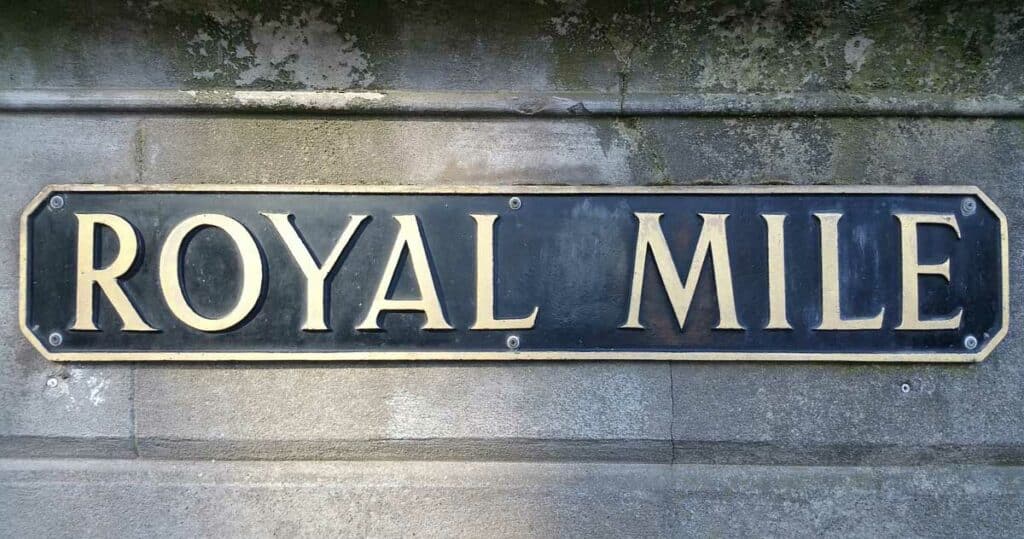
This short visitor guide gives an overview of Edinburgh’s Royal Mile and highlights some of its many attractions.
Readers will also find lots of historical snippets which provide extra detail.
Many of the entries have links to further authoritative information.
What is the Royal Mile Edinburgh?
Edinburgh’s Royal Mile lies at the centre of the city’s Old Town, still in many ways the heart and soul of Scotland’s capital.
At its head is Edinburgh Castle, at its foot, is the Palace of Holyroodhouse.
“The largest, Longest and Finest Street in the World.”
Daniel Defoe
The Royal Mile isn’t one long thoroughfare, it’s more a series of connecting streets.
From the top of the hill, west to east the streets are:
- Castlehill
- Lawnmarket
- High Street
- Canongate
- Abbey Strand
Mary Queen of Scots
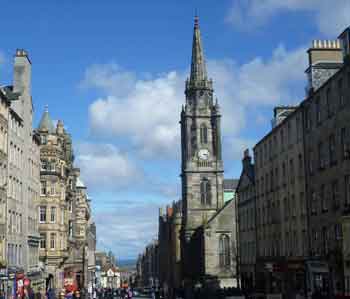
Visitors to Edinburgh who flock to the capital to explore the Royal Mile are following in the footsteps of kings and queens.
Many who wore the crown of Scotland have for the last five centuries made the short journey from Castle to Palace.
Perhaps the most famous journey made was that of Mary Queen of Scots.
The young monarch, newly returned from France, took the road from the Castle to what would become her new home at the Palace of Holyroodhouse in 1561.
Queen Mary had many connections to Scotland’s capital city. This article on Truly Edinburgh says more.
What’s on the Royal Mile?
This ancient Edinburgh landmark is littered with historic buildings and other visitor attractions.
- Read the Origins of 42 Edinburgh Street Names
- Edinburgh’s royal attractions: a historical perspective
For those looking for accommodation here, there is a wide range of places to stay.
There are luxury hotels, apartments, backpacking hostels and rental apartments to choose from.
Unsurprisingly there are also plenty of pubs and restaurants to enjoy. In addition, the ‘Mile’ is the location for some of the best whisky shops in Edinburgh and a well-known NTS property.
Shopping on the Royal Mile
Those who love to shop will find some wonderful independent and specialist shops to explore. There are also the inevitable plethora of ‘touristy’ souvenir outlets.
During the various Edinburgh festivals, the area is very crowded but stopping to watch some of the street performers can be great fun.
Royal Mile closes
During the 18th century, the long spine of the Royal Mile was crowded with a myriad of wynds (alleys) and about 400 closes (narrow, often dark steep, alleys).
Together they formed a distinctive herringbone pattern extending on both sides.
The closes often allowed access to the towering lands (tenements) that provided homes to Edinburgh’s citizens – rich and poor.
The higher the social class, the further away from the squalor of the street. The poorest lived at street level.
The now demolished Todrick’s Wynd, which took its name from a 15th century resident, ran from the High Street to the Cowgate, the site of the Magdalen Chapel.
It’s a perfect example of the slum conditions in an Edinburgh Old Town wynd.
“We devoutly believe that no smell in Europe or Asia… can equal in depth and intensity, in concentration and power the diabolical combination of sulphurated hydrogen we came across one evening in a place called Todrick’s Wynd, close to the Royal Mile.”
Builder’s Journal 1861
Edinburgh regeneration
With considerable urban regeneration achieved by the various Edinburgh Improvement Acts, fewer closes survive today.
The ravages of the Great fire of Edinburgh in 1824 also brought sweeping changes to the Old Town.
Many of them have now been cleaned and restored and provide a fascinating stopping point for visitors. Some of the most interesting are mentioned in this article.
Many of Scotland’s best-known historical figures lived or worked in the closes or lands.
A few examples are:
- Robert Burn’s publisher William Creech lived at Craig’s Close.
- William Smellie printed the first edition of the Encyclopaedia Britannica in Anchor Close.
- Philosopher David Hume lived at Riddles Court.
Thanks to people like Sir Patrick Geddes town planner and conservation pioneer (1854-1932) many of the historically important buildings from earlier centuries have survived.
Royal Mile: Castlehill
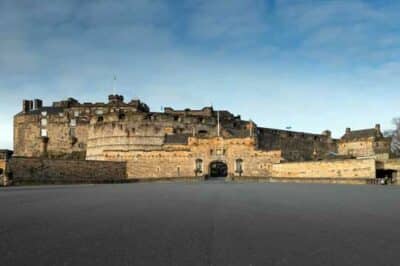
Edinburgh Castle marks the top of Castlehill, either the beginning or the end of a journey. It sits on the ancient Castle Rock.
Its esplanade which stretches out in front of the portcullis gate is now home to the extravaganza that is the Royal Military Tattoo.
Historic Environment Scotland tells us that a “parade ground between the entrance to the castle and the approach road from the Lawnmarket was built in 1753…”
The Edinburgh Geological Society provides a little more detail about Castle Rock.
It describes it as “…dolerite rock formed as part of an ancient volcanic complex that underlies the heart of the city….”
Castlehill ends at the Tolbooth Kirk which has the highest spire in Edinburgh. This short street is home to some of Edinburgh’s best-loved attractions.
Edinburgh Castle
Edinburgh Castle, the best-known of all Scottish castles is a fascinating place to visit. You’ll discover the Honours of Scotland, the Stone of Destiny and the mighty siege cannon that is Mons Meg.
You could explore St Margaret’s Chapel, Edinburgh’s oldest building and, the Great Hall built by James IV. Find out more from the Castle’s official website.
For those who like to take the time to pause for reflection as they explore a city, then the Witches Well at the entrance to the Castle esplanade offers the ideal place.
This simple monument is a poignant reminder of the hundreds of women who were found guilty, in the eyes of the law, and burned at the stake on Castlehill.
Camera Obscura
Also, on Castlehill, Camera Obscura offers a world of optical illusions.
It has tricks, puzzles, a magical mirror maze, the biggest display of holograms in Europe and the ever-popular Victorian ‘Eye in the Sky’.
All this and an amazing view from the roof terrace. It’s an experience for kids of all ages.
More information from the Camera Obscura website.
The Scotch Whisky Experience
On the opposite side of the road, but still on Castlehill, is the Scotch Whisky Experience.
Take a tour and discover 300 years of Scotch whisky history. If you’re lucky, the centre’s resident ghost may reveal some of the blender’s best-kept secrets.
Try a nip of Laphroaig the best whisky in the world (in my humble opinion).
Dine in the Amber Restaurant and Whisky Bar or immerse yourself in the world of Scotch Whisky on one of their popular whisky training courses
More information from the Scotch Whisky Experience website.
Royal Mile: Lawnmarket
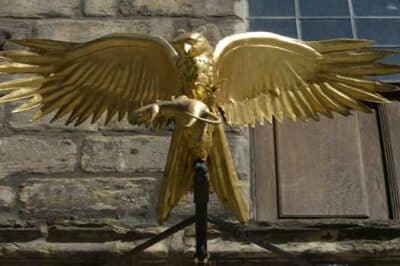
Gladstone’s Land
Gladstone’s Land is one of the best surviving examples of a 17th century Edinburgh tenement, complete with ‘luckenbooths’ which were originally little market stalls.
This Old Town landmark was once owned by Thomas Gledstanes a wealthy merchant.
Today, administered by the National Trust for Scotland, one of a number of NTS properties in Edinburgh, the building is open to the public.
Gladstone’s Land holds some real treasures for curious visitors. For example, the ‘Little chamber’ complete with the Darien Press is a reminder of the dark days when Scotland tried to establish a colony in what is now modern Panama.
One of the best-loved aspects of the house is the range of period costumes that both adults and kids can try on while exploring.
Just a word of warning that on a busy day, the house is easy to miss so make sure you know the location in advance.
Find out more from the National Trust for Scotland.
David Hume
Sitting outside the High Court on the Lawnmarket is a statue of David Hume, one of the great Scottish Enlightenment figures.
The inscription on the plinth says:
“Philosopher and Historian: Scot and European: Man of the Enlightenment.”
Anon
Writers’ Museum
The Museum, a reminder perhaps that Edinburgh is the world’s first UNESCO City of Literature, is in Lady Stairs Close, part of Lawnmarket.
It’s dedicated to the lives of some of Scotland’s finest writers: Robert Louis Stevenson, Sir Walter Scott and Robert Burns who stayed here when he visited Edinburgh.
It houses a fascinating collection of manuscripts, portraits and personal items.
Find out more from the Writers’ Museum website.
Royal Mile: High Street
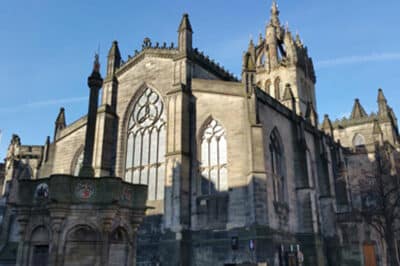
St Giles’ Cathedral
Exploring St Giles’ Cathedral is one of my favourite things to do in Edinburgh. Don’t miss the Thistle Chapel and its intricate carvings.
This magnificent building is inextricably linked to some of Scotland’s most influential figures. including: The Duke of Argyle, Marquis of Montrose, John Knox and those who formed the Covenanting movement that swept the nation.
Find out more about St Giles’ Cathedral from Truly Edinburgh.
The Heart of Midlothian
Set in the pavement outside St Giles, the heart-shaped mosaic marks the entrance to the old and hated Edinburgh Tollbooth prison demolished in 1817.
In 1818, Sir Walter Scott published The Heart of Midlothian which focuses on the Porteous Riots of 1736 and often mentions the Tollbooth where John Porteous, the captain of the Edinburgh guard was incarcerated.
Scott, always an avid collector of memorabilia managed to salvage one of the doors for his Abbotsford home
The Great Fire of Edinburgh: James Braidwood
Returning to the aforementioned Great Fire of Edinburgh for a moment, a statue of James Braidwood.
This remarkable man who established the world’s first municipal fire service in Edinburgh stands in Parliament Square close to St Giles’ Cathedral.
Braidwood, within weeks of his appointment as ‘Master of Engines’, was risking his life as the Great Fire roared down the Royal Mile.
This feature article on Truly Edinburgh says more about Braidwood and the Great Fire.
Parliament Hall
While many visitors to Edinburgh know they can visit the new Scottish Parliament building opened in 2004.
That they can also visit the debating hall where the last Parliament of Scotland sat until the Act of Union in 1707 is less well known.
Parliament Hall, built at the instigation of Charles I and still with its original 17th century hammer-beam roof sits behind St Giles Cathedral.
Although now a part of the Supreme Court and used by lawyers and their clients, it is still open to the public although it’s not widely advertised.
The Hall is peppered with statues and portraits of politicians and legal grandees who once plied their trade in this historic building.
Among them Henry Erskine who found himself with the unenviable task of defending the celebrated Edinburgh thief Deacon Brodie.
The Real Mary King’s Close
Mary King’s Close is situated on the High Street across the road from St Giles’ Cathedral.
The Close was part of a 17th century street running north under what is now Edinburgh City Chambers.
A visit is an opportunity to take a look at life in the city before the Black Death arrived in 1645 and discover the stories of some of the people who once lived here.
If you’re interested in the history of Edinburgh then a visit to the Real Mary King’s Close is for you.
Find out more about Mary King’s Close from this feature article on Truly Edinburgh.
Mercat Cross
Also close to St Giles’ on the High Street is the Mercat Cross (the Cross of Edinburgh) once the traditional meeting point for gatherings, royal proclamations and more than a few public executions. Today it’s often used as the meeting point for many of the city’s walking tours.
Historic Environment Scotland has published some archaeological notes on the Mercat Cross of Edinburgh.
John Knox House
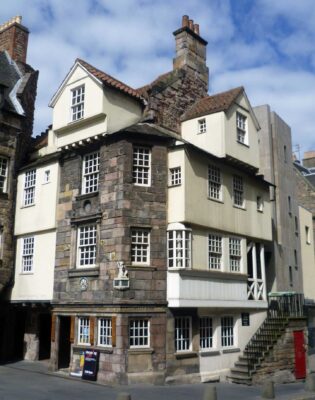
Staying on the High Street, John Knox House is part of the Scottish Storytelling Centre.
It’s one of the oldest buildings in Edinburgh, mostly built in the 16th century with earlier sections dating to 1470. In 1556 wealthy goldsmith James Mossman and his wife bought the building.
Mossman, a supporter of Mary Queen of Scots, was later hanged during the religious turmoil of the period.
However, whether John Knox ever lived here is a matter of debate. Today the building is a museum dedicated to the history of the Reformation. It’s a fascinating place to visit.
“I fear the prayers of John Knox more than all the assembled armies of Europe.”
Mary Queen of Scots
Museum of Childhood
It’s the first museum in the world to specialise in the history of childhood. it can be the nosiest museum in town. With toys from across the generations and around the world, it’s fun for big people as well.
Find out more from the Museum of Childhood website.
Royal Mile: Canongate
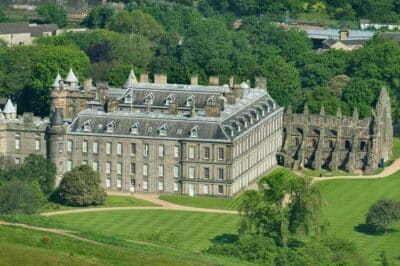
The Netherbow Port, complete with turreted towers, was once the main gateway into Edinburgh and marked the divide between the High Street and the Canongate.
Today at the junction of High Street, St Mary’s Street and Jeffrey Street a series of brass cobbles marks the spot.
It wasn’t until 1865, that the Burgh of Canongate, named after the Augustinian canons of Holyrood Abbey, became a part of the city of Edinburgh.
Canongate Tolbooth
With its clock and turreted façade, the Tolbooth is one of the most distinctive and most photographed buildings in the city.
Built in the late 16th century it was initially designed as the meeting place for the town council and merchants from the Canongate burgh. While it was indeed a meeting place it also functioned as a courthouse and jail.
People’s Story Museum
Housed in the Canongate Tolbooth, at the lower end, the museum is filled with past sights, sounds and smells from the lives of the people who lived in Edinburgh.
This interesting museum takes a look at some of the early working conditions that real people had to endure along with social housing, crime and leisure activities in Scotland’s capital city. It’s a story told through the medium of photographs and personal and household items.
Find out more from the People’s Story Museum website.
Bakehouse Close: Outlander film location in Edinburgh
Bakehouse Close, better known to Outlander fans, was Carfax Close, in season 3, the site of Alexander Malcolm’s print shop. The close with its 16th century entrance runs off the Canongate close to the Museum of Edinburgh.
Although there is little to see today, turn the clock back and there are historical connections to Robert Louis Stevenson and other historic figures.
Dunbar’s Close Garden
Visit Dunbar’s Close Gardens is one of the nicest free things to do in Edinburgh.
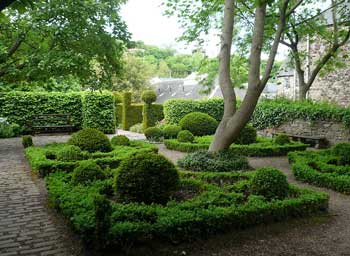
Taking its name from Edinburgh writer David Dunbar is one of these wonderful ‘hidden gems’.
Set back and hidden from the street this little garden, laid out in 17th century style, was a favourite of Robert Burns.
It’s a place to relax and draw breath while escaping the bustle of the Old Town.
Find out more about Dunbar’s Close Garden on Truly Edinburgh.
White Horse Close, still on the Canongate, is an extensively restored courtyard rather than a traditional Edinburgh close. It’s a little off the beaten track but it’s worth seeking out.
Canongate Kirk and kirkyard
Standing close to Dunbar’s close garden is Canongate Kirk.
Although relatively simple in design, it was the venue for the royal wedding between Princess Anne and Mike Tindall in 2011. This article on Truly Edinburgh says more.
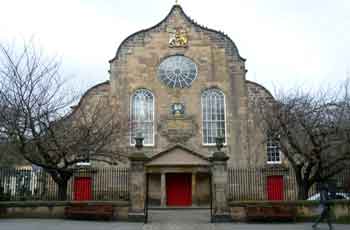
The Kirkyard was the final resting place for a number of well-known figures:
- Adam Smith, founder of modern economics and author of The Wealth of Nations (short title).
- Robert Fergusson, poet and inspiration to Robert Burns
- David Rizzo, Italian secretary to Mary Queen of Scots, was brutally murdered at the Palace of Holyroodhouse. although it’s almost certainly more legend than actually, it’s an intriguing thought he may be buried nearby
The Museum of Edinburgh
Also part of the Outlander story, the Museum of Edinburgh, with its distinctive red and yellow facade, lies close to Bakehouse Close.
This article on Truly Edinburgh says more about some of the Outlander film locations in Edinburgh and nearby.
The Palace of Holyroodhouse
Holyrood Palace, the official residence of the royal family when they visit Scotland, started life as a monastery in 1128.
A visit to the Palace gives you a taste of Scotland’s turbulent past, a great place to explore if you have an interest in Scotland’s best-loved monarch Mary Queen of Scots.
Holyrood Abbey
The remains of Holyrood Abbey, founded in the 12th century by David I stands in the grounds of Holyrood Palace. This article on Truly Edinburgh says more about the Abbey.
Royal Mile: Abbey Strand
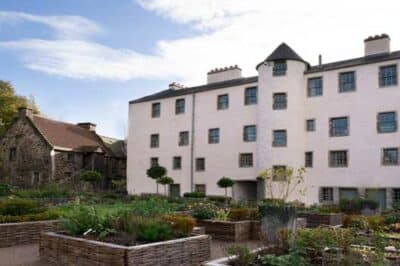
The Abbey Strand is the very short road that runs from the bottom of the Canongate to the gates of Holyrood Palace.
While the rest of the Royal Mile has a story to tell, this section has a particularly colourful history.
Some of the original buildings were connected to the nearby Abbey and may have provided a home for the abbot as well as the royal courtiers of Mary Queen of Scots.
It became a sanctuary for debtors until 1880 and with a brewery, several taverns and a brothel there was plenty to keep residents occupied.
Today the Abbey Strand is home to a new physic garden opened in 2020 by the Royal Collection Trust. a wonderfully evocative space with links to the beautiful Edinburgh Royal Botanic Garden.
The Royal Geographical Society: Royal Mile Walk
The Royal Geographical Society publishes a really helpful self-guided walk of the area. If you prefer there’s an app you can download to your phone. Find out more on their Discovering Britain site.
Attractions Close to the Royal Mile
Although the road peters out at Holyrood Palace there are a few places nearby that are well visiting
Scottish Parliament
Visiting the Scottish Parliament building is another of the most popular free things to do in Edinburgh. While not traditionally considered as part of the Royal Mile it lies close to the Palace of Holyroodhouse and Holyrood Park. With its controversial, yet award-winning design. it’s well worth a visit. There are several tour options available.
Find out more from the Scottish Parliament website.
Holyrood Park
Although Holyrood Park and Arthur’s Seat are not strictly part of the Royal Mile it stretches out from the Parliament buildings and has long played an important part in life in Scotland’s capital city.
Of the many natural attractions within the park, Duddingston Loch is a tranquil spot away from the Old Town crowds,
The Loch lies close to the remarkable Dr Neil’s Garden another of these wonderful yet almost unknown places that offer visitors a haven of tranquillity away from the Old Town cacophony.
Holyrood Distillery
In 2019, Holyrood Distillery became the first single malt distillery to open in Edinburgh for many years. For more information see this article about Edinburgh’s distilleries on Truly Edinburgh.
Dynamic Earth
Almost impossible to describe in a few sentences, Dynamic Earth tells the story of Planet Earth.
It offers families an exciting, imaginative science-focused interactive experience. More information from the official Dynamic Earth website.
SUGGESTIONS FOR FURTHER RESEARCH & READING
- Harwood, S.A. and El-Manstrly, D., 2012. An Audit of a UNESCO World Heritage site Royal Mile, Edinburgh: a preliminary search for authenticity.
- Rhodes, D.T., Uglow, N. and Addyman, T., 2017. Gladstone’s Land: the changing face of Edinburgh’s Royal Mile. Post-Medieval Archaeology, 51(2), pp.354-371.
- Pittock, M., 2019. Edinburgh: Smart City of 1700. The New Town of Edinburgh: An Architectural Celebration, pp.24-38.
- Henderson, J.A., 2017. The Royal Mile: A Comprehensive Guide. Amberley Publishing Limited.